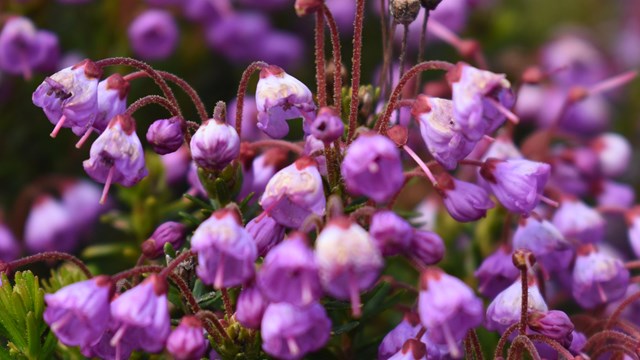|
North Cascades National Park Service Complex spans the Cascade Crest from the temperate rainforest of the wet west-side to the dry ponderosa pine ecosystem of the east. The park encompasses landscapes with over 9,000 feet of vertical relief. There results a high diversity of plants, over 1,600 species so far identified, and many other organisms adapted to a wide spectrum of habitats. The relatively new mountains, glaciers and streams of North Cascades lie near a dynamic interface of tectonic plates and provide an opportunity to study geologic processes unfolding through time. Geologists and others seek answers to questions of global climate change, mountain building and erosion, volcanism, glaciation, stream dynamics, and more. 
Animals
Learn more about the diverse animals that live in the North Cascades. 
Bear Safety
Learn more how to stay safe in bear country. 
Plants
Learn more about the North Cascades' botanical diversity. 
Inventory and Monitoring
Learn more about inventory and monitoring projects throughout the park complex. 
Natural Features & Ecosystems
Discover the variety of rock and water features contribute to the region's tremendous biodiversity. 
Environmental Factors
Discover the different effects the elements have on the North Cascades. 
Climate Change
See how climate change has already affected park resources, recreational opportunities, and park management. |
Last updated: October 1, 2024
